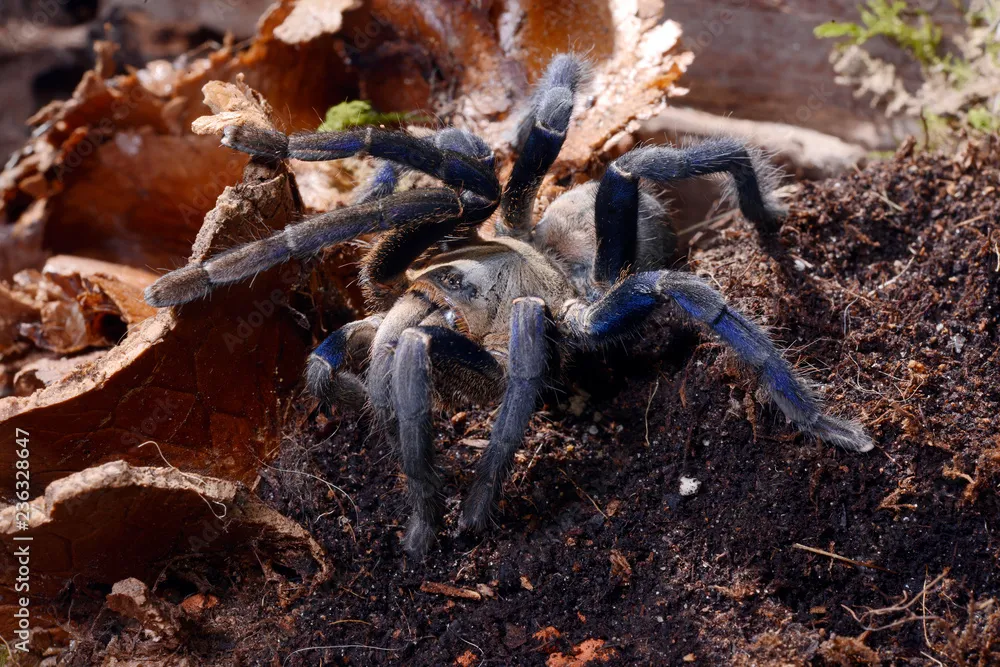Thai Cobalt Blue Tarantula: Overview
The Thai Cobalt Blue Tarantula (Cyriopagopus lividus) is a stunning and captivating species, highly sought after by tarantula enthusiasts. Known for its striking cobalt blue coloration, especially vibrant in juveniles, this tarantula originates from Thailand and Myanmar. While visually appealing, caring for a Thai Cobalt Blue Tarantula requires specific knowledge and attention to detail to ensure its health and well-being. This guide will provide you with the top 5 essential tips for successfully keeping this exotic beauty, covering everything from enclosure setup and environmental control to feeding and safe handling practices. By following these guidelines, you can create a thriving environment for your Thai Cobalt Blue Tarantula and enjoy the unique experience of owning this remarkable creature. Proper care is crucial, as this species can be delicate if their specific requirements are not met.
Understanding the Thai Cobalt Blue Tarantula
Before diving into the specifics of care, it’s important to understand the nature of this tarantula. Thai Cobalt Blues are known for their relatively defensive nature, meaning they may be prone to biting or flicking urticating hairs if they feel threatened. They are also fast and agile, making careful handling a must. These tarantulas are terrestrial, meaning they live primarily on the ground, and they are opportunistic burrowers, so providing the right setup is crucial for their comfort and safety. Understanding their behavior and natural habitat will give you a head start in providing the best possible care. Their lifespan can vary, but females typically live longer than males, making them a more significant investment for those looking for a long-term pet.
Appearance and Characteristics
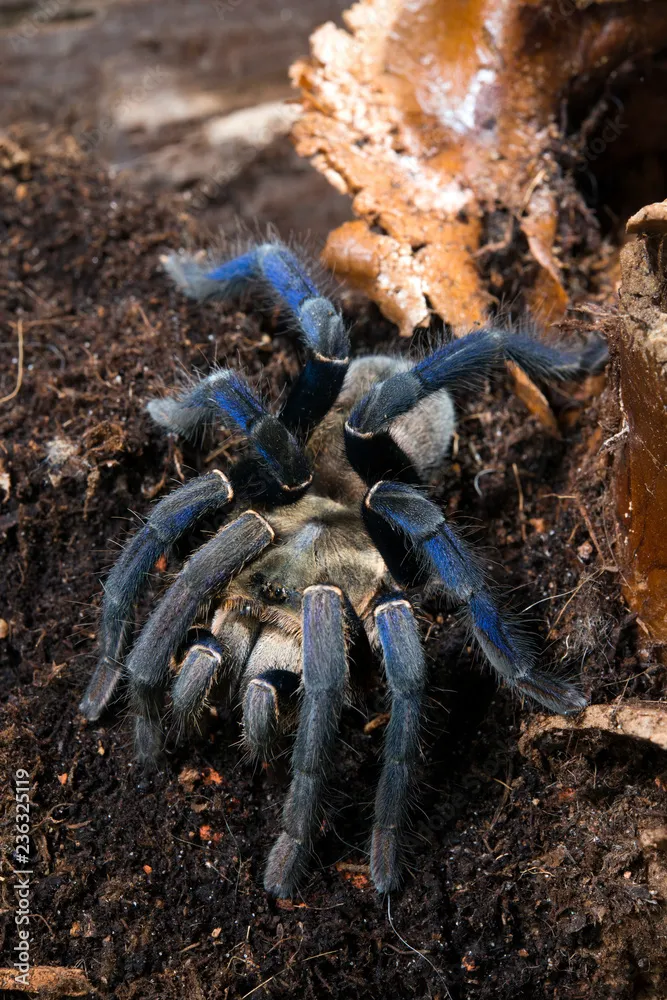
The most distinguishing feature of the Thai Cobalt Blue Tarantula is its striking coloration. Juveniles display an intense cobalt blue hue on their legs and carapace, gradually fading to a dark blue or black as they mature. The abdomen often has a darker coloration with a slight iridescence. These tarantulas typically reach a leg span of around 5-6 inches, with females usually being larger than males. Their size, combined with their vibrant coloration, makes them a visually stunning addition to any tarantula collection. Be prepared for the color to change slightly after molting, which is a natural process where they shed their exoskeleton to grow. Healthy specimens will have a vibrant appearance.
Tip 1: Enclosure Setup
Creating the right enclosure is the foundation of successful Thai Cobalt Blue Tarantula care. The enclosure should be appropriately sized, secure, and provide a suitable environment for burrowing and hiding. A ten-gallon tank is usually sufficient for juveniles, while a 20-gallon long tank is preferable for adults, giving them ample space to move around. It is crucial that the enclosure has a secure lid to prevent escape, as these tarantulas are skilled climbers. Proper ventilation is also important, as it helps regulate humidity and prevent the buildup of mold and bacteria. Consider the height of the enclosure, as these tarantulas are not known for climbing, so more floor space is better than vertical space.
Choosing the Right Enclosure
When selecting an enclosure, consider both the size and the material. Glass or clear plastic enclosures are ideal as they allow for easy viewing and maintenance. Ensure the enclosure is well-ventilated with appropriate airflow, and the lid is securely fastened to prevent escape. Avoid enclosures with sharp edges or protrusions that could potentially injure the tarantula. A front-opening enclosure can be beneficial for easier maintenance and handling. The enclosure should be easy to clean and disinfect. Look for enclosures specifically designed for tarantulas or other arachnids. Also, factor in the adult size of the tarantula, and choose an enclosure that will accommodate its full size when fully grown. Proper enclosure selection is critical for its long-term well-being.
Substrate Selection
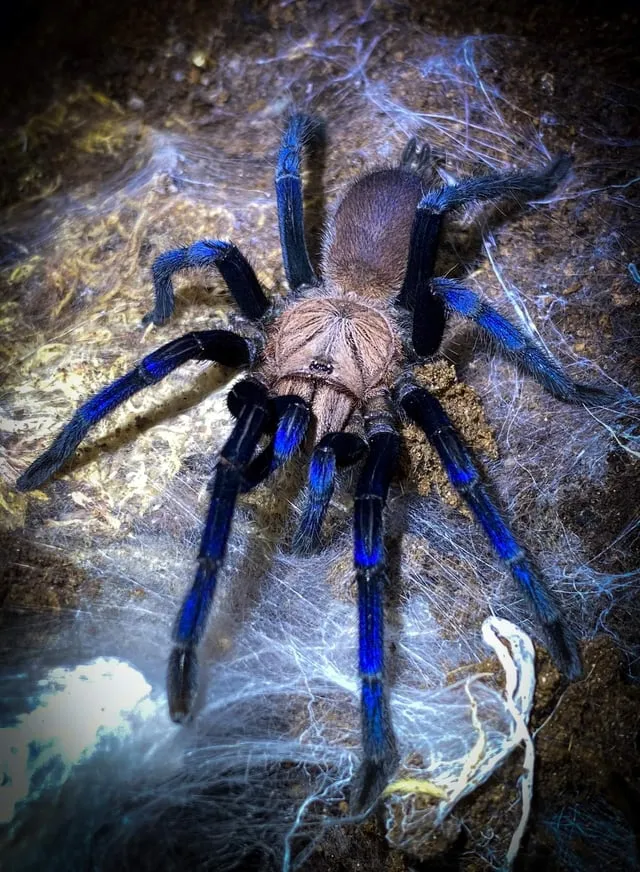
The substrate is a critical aspect of the enclosure, serving several purposes, including providing a comfortable environment for burrowing, maintaining humidity, and absorbing waste. A mix of substrate materials often works best for Thai Cobalt Blue Tarantulas. A blend of peat moss, vermiculite, and coconut fiber is a good option, providing moisture retention and burrowing capabilities. The substrate should be deep enough for the tarantula to burrow comfortably, usually 4-6 inches is recommended. Avoid substrates that are dusty or could irritate the tarantula’s book lungs. Regularly monitor the substrate for cleanliness and replace it as needed. Consider adding leaf litter to provide hiding places and a more naturalistic environment. A well-maintained substrate is essential for the tarantula’s health and happiness.
Providing Hides and Decorations
Tarantulas are naturally shy and benefit greatly from having hiding places within their enclosure. Provide at least one hide, such as a piece of cork bark, a hollow log, or a commercially available tarantula hide. This will allow the tarantula to feel secure and reduce stress. Other decorations, such as artificial plants, can also be added to the enclosure to provide additional cover and enrichment. Make sure any decorations are securely placed and won’t topple over, potentially injuring the tarantula. The presence of hides and decorations will help your tarantula feel secure, reducing stress and promoting a healthier environment. The more naturalistic the enclosure looks, the better, but always prioritize the tarantula’s safety and well-being.
Tip 2: Maintaining Temperature and Humidity
Temperature and humidity are crucial factors in the health and well-being of your Thai Cobalt Blue Tarantula. Maintaining the correct environmental conditions is essential for their molting, feeding, and overall vitality. Both temperature and humidity levels directly affect the tarantula’s metabolism and behavior. The right balance will help prevent health issues and promote a longer, healthier life. Regular monitoring with a thermometer and hygrometer is essential for ensuring these conditions are consistently met within the enclosure. Adjustments may be needed based on the season or environmental changes. These are key factors that require careful attention.
Ideal Temperature Range
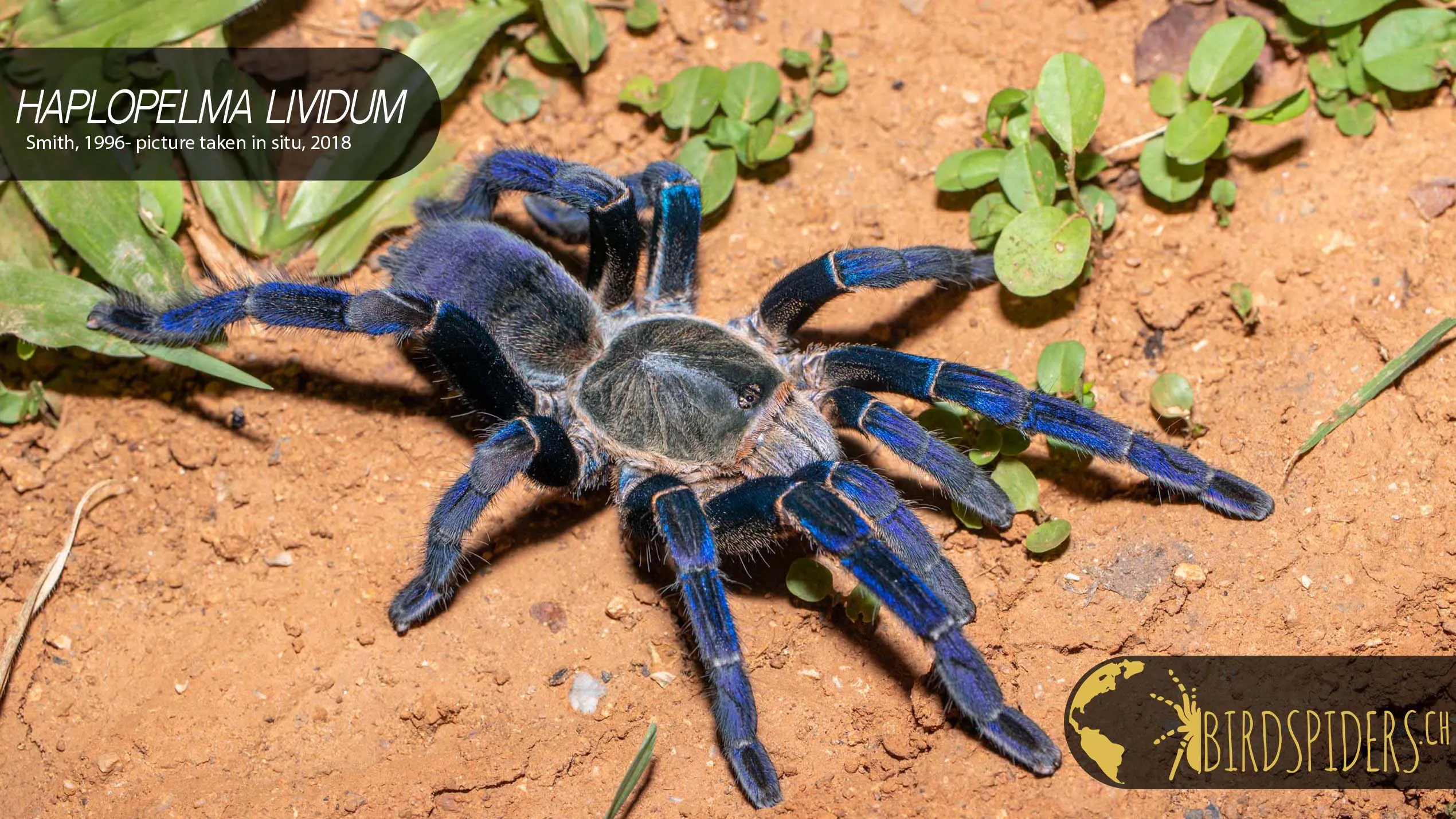
Thai Cobalt Blue Tarantulas thrive in temperatures between 75-85°F (24-29°C). It’s important to maintain a consistent temperature range, as fluctuations can stress the tarantula. Use a thermometer to monitor the temperature within the enclosure. In cooler environments, a low-wattage heat pad or ceramic heat emitter can be used to maintain the desired temperature. Always place the heat source on the side or back of the enclosure, never directly underneath, to avoid overheating the tarantula. Avoid direct sunlight exposure, as this can overheat the enclosure. Consistent temperature is vital for the tarantula’s health.
Humidity Control Methods
Humidity is another critical factor for the well-being of a Thai Cobalt Blue Tarantula. Aim for a humidity level of 65-75%. This can be achieved by misting the enclosure with dechlorinated water, typically every other day, but the frequency will depend on your local climate and the ventilation of your enclosure. A hygrometer is essential for monitoring humidity levels. Ensure the substrate remains slightly moist but not waterlogged, as this can lead to mold and fungal growth. Adequate ventilation is important to prevent excessive moisture buildup and promote healthy air circulation. Avoid over-misting, as this can lead to health problems. Make sure the enclosure is not completely sealed as this can increase the risk of fungal infections and other respiratory problems.
Tip 3: Feeding Your Tarantula
Feeding is a fundamental aspect of tarantula care, and understanding the nutritional needs of your Thai Cobalt Blue Tarantula is essential. A proper diet ensures they receive the necessary nutrients for growth and vitality. Overfeeding can be as detrimental as underfeeding, so it’s crucial to find the right balance. The tarantula’s feeding habits can also be a good indicator of their health. A healthy tarantula will readily accept food, while a loss of appetite can signal underlying issues. Pay close attention to the tarantula’s feeding behavior and adjust their diet accordingly to promote its health and longevity.
Appropriate Food Choices
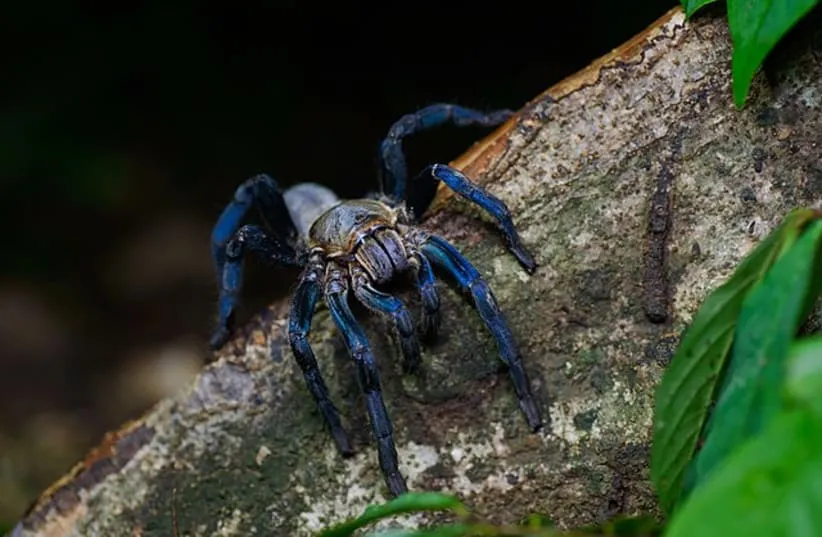
The Thai Cobalt Blue Tarantula’s diet should consist primarily of insects. Crickets, mealworms, and roaches are common choices, providing essential protein and nutrients. The size of the prey should be appropriate for the tarantula’s size, generally no larger than the tarantula’s body length. Avoid feeding wild-caught insects, as they may carry parasites or pesticides. Commercial insect breeders offer a variety of insects that are safe and nutritious. Variety in the diet is also important, so occasionally offering different insect types can provide a wider range of nutrients. It’s important to ensure that the insects are gut-loaded, which means feeding them nutritious food before offering them to your tarantula. This ensures your tarantula receives optimal nutrition.
Feeding Frequency
The feeding frequency for a Thai Cobalt Blue Tarantula depends on its age and size. Spiderlings should be fed 2-3 times a week, while juveniles and adults can be fed once or twice a week. Adjust the feeding schedule based on the tarantula’s appetite and growth rate. A tarantula that is not hungry may refuse food, which is normal. Remove any uneaten prey within 24 hours to prevent stress and potential mold growth. Always provide a fresh water source for the tarantula, as it will need to drink regularly. Observe your tarantula’s eating habits and adjust the feeding frequency accordingly. Overfeeding is more common in captive tarantulas than underfeeding; it is better to err on the side of caution.
Tip 4: Water and Hydration
Providing fresh water is crucial for the health and survival of your Thai Cobalt Blue Tarantula. Dehydration can lead to serious health issues, so ensuring proper hydration is essential. Water is involved in many critical biological processes. Always have a clean and accessible water source available. This is a simple yet often overlooked part of tarantula care, but it is of vital importance. Provide the right type of water and ensure that the water source is always clean. Keeping the water supply clean and readily available will ensure that your tarantula can thrive.
Water Dish and Refilling

A shallow water dish is ideal for tarantulas, minimizing the risk of drowning. The water dish should be small enough to prevent the tarantula from getting trapped but large enough to provide a reliable water source. Use a dish that is easy to clean and disinfect. Change the water in the dish regularly, ideally every day or two, to prevent the growth of bacteria and algae. Ensure the water is dechlorinated to avoid harmful chemicals. If using tap water, let it sit out for 24 hours to allow chlorine to evaporate, or use a water conditioner. Keep the water dish filled to the appropriate level. Monitor the water level regularly and refill as needed.
Misting Techniques
In addition to providing a water dish, misting the enclosure can help maintain humidity levels, which are essential for the Thai Cobalt Blue Tarantula. Use a spray bottle filled with dechlorinated water to mist the enclosure. Mist the enclosure lightly, avoiding over-misting, as this can lead to a buildup of excess moisture and potentially cause health problems. Mist the sides of the enclosure and the substrate, allowing the water to evaporate gradually. The frequency of misting will depend on the humidity level of the environment. Regularly monitor the humidity levels with a hygrometer. Over-misting can cause the substrate to become waterlogged, and under-misting will lead to a dry environment. Finding the right balance is key to proper care.
Tip 5: Handling and Safety
While the Thai Cobalt Blue Tarantula is a beautiful and fascinating species, it’s also important to understand the risks associated with handling. These tarantulas are known for their defensive nature and can bite, injecting venom that causes pain and localized symptoms. They also have urticating hairs that can cause irritation. Prioritizing safety is paramount when interacting with your tarantula. Always practice caution and know the risks involved. Avoiding handling whenever possible and taking the proper precautions will greatly reduce the risk of injury. Always consider the tarantula’s well-being, and if unsure, it’s best to err on the side of caution.
When to Avoid Handling
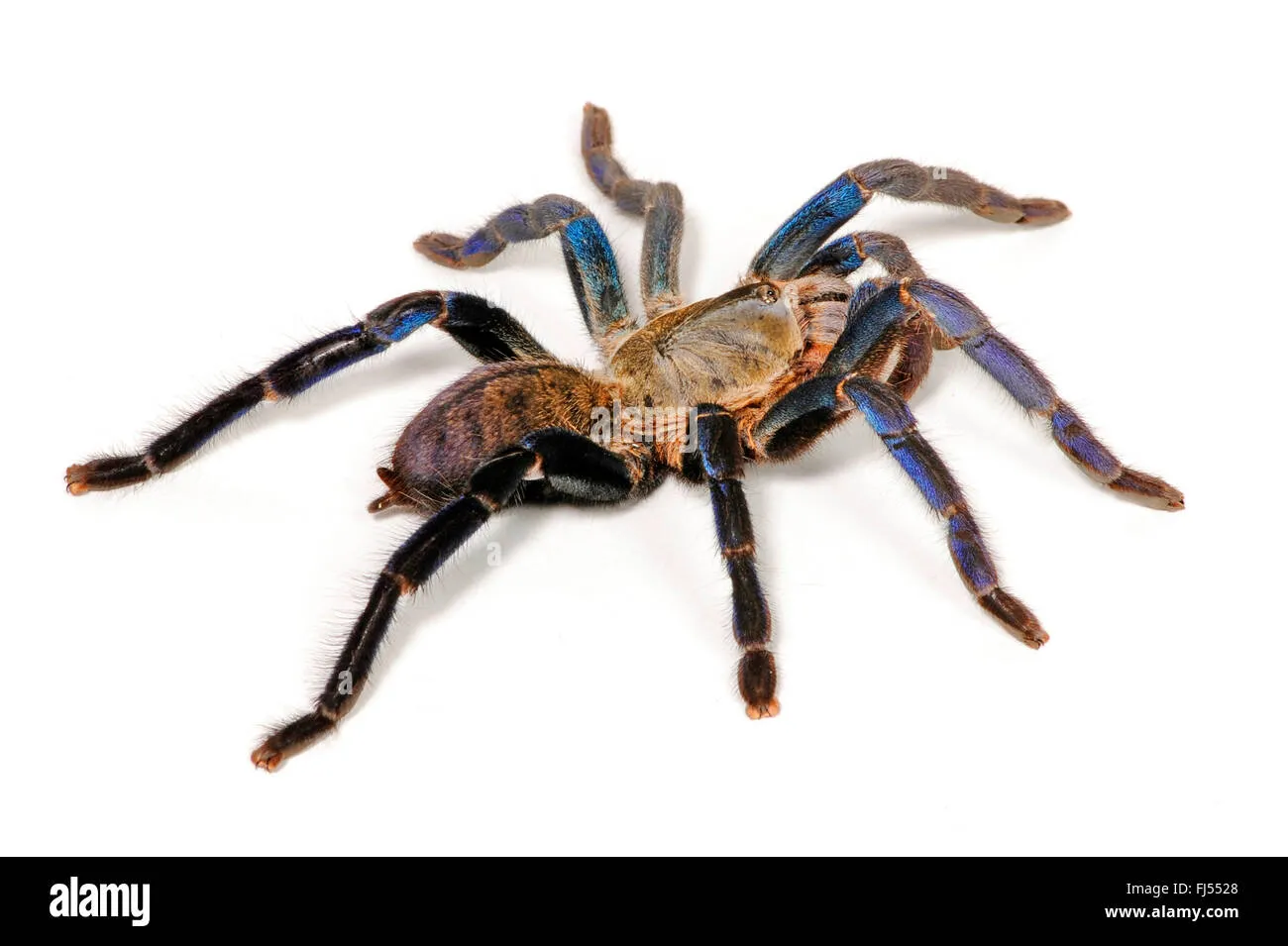
Handling should generally be avoided unless absolutely necessary, such as for enclosure cleaning or health checks. Do not handle the tarantula if it appears agitated, threatened, or in premolt. Signs of agitation include raising its front legs, displaying its fangs, or flicking urticating hairs. Never handle a freshly molted tarantula, as their exoskeletons are soft and vulnerable. Also, avoid handling a tarantula that is eating or has just eaten, as it is more likely to be defensive. Remember that tarantulas are fragile creatures and should be treated with respect. Handling them can cause unnecessary stress. It’s better to admire them from afar, as observing their natural behavior is one of the greatest joys of keeping these animals.
Safe Handling Practices
If handling is necessary, use extreme caution and move slowly. Always handle the tarantula close to the ground or a soft surface, in case it falls. Avoid any sudden movements that might startle the tarantula. Use a soft, wide brush to gently guide the tarantula if needed. Never put your hand directly in front of the tarantula’s fangs. Always wash your hands thoroughly before and after handling. If you are bitten, clean the wound immediately and monitor for any adverse reactions. It is important to be aware of the risks and take precautions to minimize potential harm. Have a safe, secure container ready in case the tarantula needs to be moved. Practice patience, and always prioritize the tarantula’s well-being.
Conclusion
Caring for a Thai Cobalt Blue Tarantula can be a rewarding experience, offering a unique glimpse into the fascinating world of exotic pets. By following these top 5 tips – proper enclosure setup, maintaining optimal temperature and humidity, providing a balanced diet, ensuring adequate water and hydration, and practicing safe handling – you can create a thriving environment for your tarantula. Remember to always prioritize the tarantula’s health and well-being, and to observe its behavior closely. With the right care and attention, you can enjoy the stunning beauty of your Thai Cobalt Blue Tarantula for many years to come.
